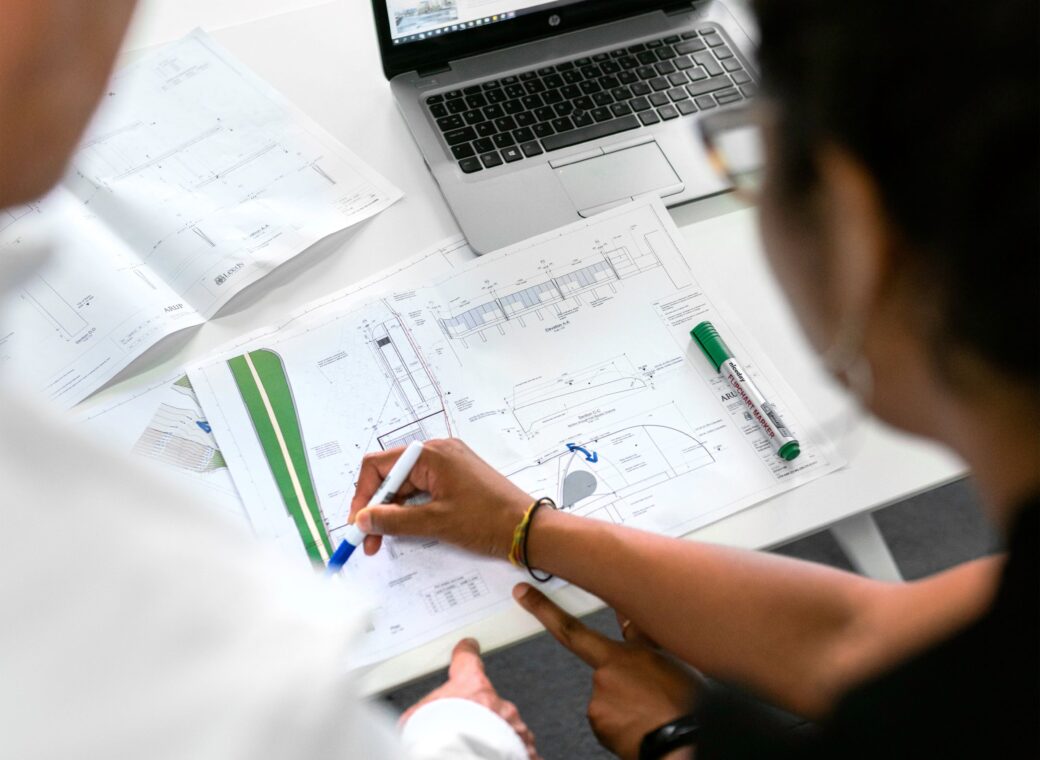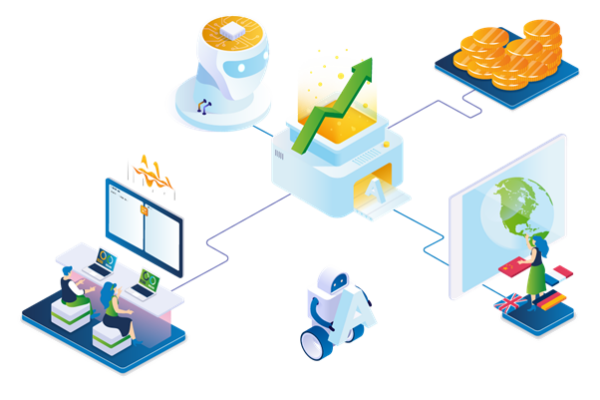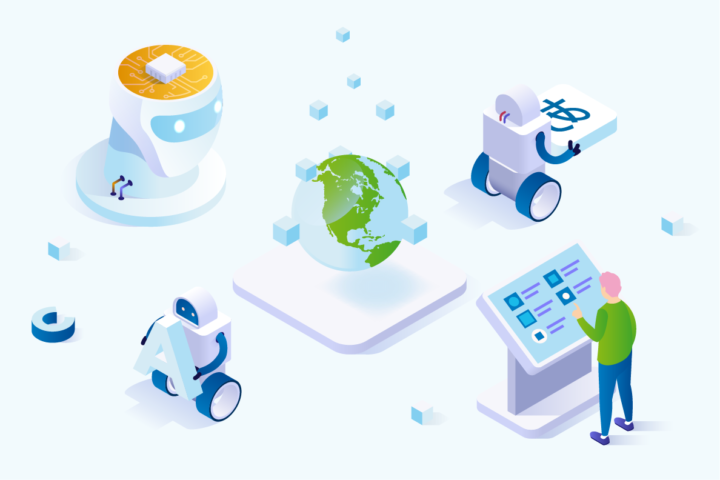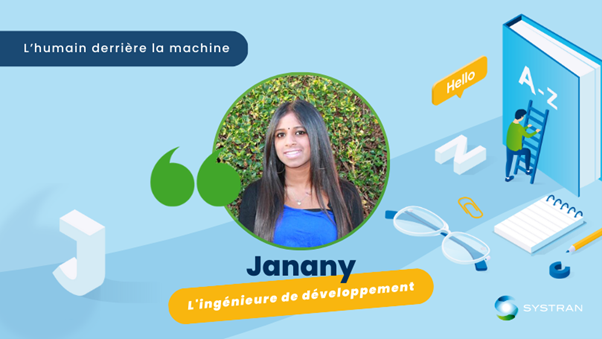In today’s fiercely competitive global engineering arena, the complexities of internationalization often extend far beyond technical challenges. Among the key hurdles are language barriers. With teams and customers scattered across the world, the Babel of multiple languages can impede the effective communication and collaboration. This is especially true when it comes to handling technical documentation. AI-powered machine translation can come to the rescue, improving the dynamics and results for global engineering challenges.
Why Use Machine Translation for Documentation Localization?
Improved Cross-Language Collaboration among Teams
Applying machine translation processes for engineering documents can improve cross-border collaboration. Often teams of engineers comprise members with disparate linguistic backgrounds. While this diversity may foster rich cultural exchanges and innovative thinking, it can also result in language barriers that impede and interfere with clear, efficient communication and documentation.
This is where machine translation of technical document localization comes into play. AI-powered MT facilitates the seamless translation of complex technical concepts, tearing down linguistic barriers. The result is a more fluid exchange of ideas and a smoother collaborative process, allowing team members to contribute and interact effectively in their preferred languages. By enabling everyone on the team to communicate in their own tongue, machine translation fosters a more inclusive environment.
Machine Translation has been called a modern Rosetta Stone. That characterization applies to engineering tasks and documentation as well. Just as the side-by-side appearance of multiple languages helped to solve the mysterious meaning of Egyptian hieroglyphics, MT can expedite multi-language documentation by an order of magnitude compared to manual processes.
Accelerated Time-to-Market for Technical Products
In the competitive world of technology and innovation, the race is won by those who can deliver quickly without compromising quality. AI-expedited machine translation can play a pivotal role in achieving this goal. By radically reducing tedious and time-consuming human translation of technical documents, machine translation exponentially accelerates and transforms product development.
Engineering teams need not wait for manually translated documents to move forward. Instead, they can have instant access to translated versions of essential technical documents, expediting product development process. This faster time-to-market not only provides a competitive advantage but also allows for quicker responses to market needs and engineering changes.
Enhanced Knowledge Sharing and Information Accessibility
Better knowledge sharing and access to information are fundamental for the smooth functioning of global engineering teams. Machine translation amplifies these aspects by making technical documentation available in multiple language, fast!
The benefits of this enhanced knowledge sharing go beyond the team members. It extends to stakeholders, customers, and end-users who may need to understand product technicalities and have troubleshooting or operating instructions. The use of machine translation ensures that crucial technical information is comprehensible to all relevant parties, regardless of their native language.
Increased Efficiency and Cost-Effectiveness in Translation
Machine translation also introduces an unprecedented level of efficiency and cost-effectiveness to engineering projects. The ability of machine translation to process large volumes of text swiftly without compromising accuracy makes it a scalable solution. Even for projects involving heaps of technical documents, MT can deliver accurately translated documents swiftly and cost-effectively.
While methods for assessing the accuracy of MT are a hot topic, efficiency in translation cuts costs and speeds timelines. That benefits any firm aiming to boost productivity and cut costs.
Striking the Balance: Blending Machine Translation Automation, Human Expertise, and QA
While the benefits of machine translation alone are clear and significant, they are not optimal if not tempered with the knowledge of translation experts with vast experience in specific domains and engineering documentation. Maintaining the right balance between automation and human expertise is crucial. Here are some approaches to melding AI with human translation expertise.
Balancing Automation and Human Expertise in Machine Translation
AI-powered machine translation has revolutionized technical document localization, providing unprecedented speed and scalability. However, it can’t fully replace the nuanced understanding and cultural competence that human translators bring to the table. As researchers from the University of California Berkeley point out, striking an optimal balance between automation and human expertise can lead to higher quality translations.
This hybrid approach leverages the speed and cost-effectiveness of machine translation and tempers it with the accuracy and sensitivity of human translation. Machine translation software can process the bulk of the translation work, after which human translators review and refine the output to ensure it is both technically accurate and contextually appropriate.
Quality Assurance Measures for Technical Translations
Technical translations require a high level of accuracy because they often contain complex and critical information. Thus, quality assurance measures are indispensable in the translation process. Practices such as the use of translation memory systems and regular algorithm updates form crucial parts of these measures, as explained by experts at MIT.
Moreover, routine system evaluations are important for maintaining high translation quality. These evaluations involve assessing the performance of machine translation algorithms and making necessary adjustments to improve their accuracy and reliability.
Importance of Post-Editing and Review Processes
The post-editing review process (MTPE) is vital for ensuring the accuracy of technical document translation. After machine translation has been applied, the translated content needs to be reviewed carefully by human translators. They verify its accuracy, correct errors, and ensure that the translated document accurately and comprehensively reflects the original message.
This not only ensures the production of high-quality translations. It also helps to fine-tune machine translation algorithms, enhancing future performance. The power of AI expands language coverage by an order of magnitude at least. If ten languages of translation for documentation was once considered ambitious, one hundred is now well within reach using a strong MT solution.
The Bottom Line about Machine Translation for Engineers
While AI-powered machine translation has transformed the realm of engineering collaboration, there’s a need to strike a balance between the efficiency and scope of automation on one side and the precision and empathy of human expertise on the other.
One machine translation company facilitating software localization and product deployment is SYSTRAN. As a veteran MT-first company long before it was trendy, its field-proven AI-powered solutions accelerate software and document translation help products cross linguistic borders faster. Check out case studies for software localization, manufacturing processes, and customer support. Consider how your enterprise can benefit by balancing AI coverage and scalability with human know-how and nuance in translating engineering documentation and improving collaboration.
As AI advances at an exponential rate, the search for smart localization tools and methods has never been more urgent. By applying robust quality assurance measures and diligent review processes, engineering departments harness the ever-expanding potential of MT translation. This in turn can facilitate smooth cooperation among global engineering teams and cut time to market for all products requiring localization.
Machine Translation, tempered and balanced by human expertise, transforms a shaky tower of multilingual Babel into a humming high-rise filled with happy engineers leveraging the amazing power of AI to get more done, faster and easier. Let machines do the heavy translation lifting so that we humans have more time and freedom to invent, create and collaborate better.







